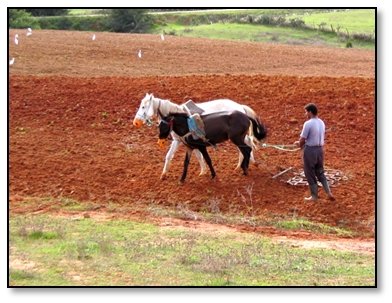|
Stage 3 in the process of testing soil and water conservation strategies in field experiments
Here the results of the field experiments are examined and evaluated in order to see if the techniques were effective or not in improving soil and water conservation and if they offer an acceptable approach to the local people.
 |
»Analysis of results
Using common methods of bio-physical and socio-economic analysis, the results of the field trials in all study sites were examined to see what effects they had on production, culturally, ecologically and off-site.
|
 |
»General conclusions from individual experiments
From the analysis of the field experiment results and the discussions with the stakeholders, general conclusions can be drawn about the effectiveness and feasibility of each of the sustainable land management techniques trialled in all the study sites.
|
 |
»General conclusions from groups of techniques
There are no universal best practices, only local solutions. In general, there are clear positive results from the experiments, especially in terms of ecological benefits.
|
More details ... field experiment results and conclusions in each study site
|
|
»Guadalentín, Spain: min. tillage+green manure
»Guadalentín, Spain: reduced tillage
»Guadalentín, Spain: water harvesting
»Mação, Portugal: fire strip network
»Góis, Portugal: prescribed fire
»Rendina, Italy (no field experiments at this site)
»Crete, Greece: minimum tillage
»Crete, Greece: rangeland fencing
»Nestos River Delta, Greece: freshwater flushing
»Karapinar, Turkey: minimum tillage
»Eskişehir, Turkey: terraces and contour tillage
»Sehoul, Morocco: gully stabilisation
»Sehoul, Morocco: minimum tillage
|
»Zeuss Koutine, Tunisia: rangeland resting
»Zeuss Koutine, Tunisia: water harvesting
»Dzhanibek, Russia: drip irrigation
»Novy, Russia: drip irrigation
»Yan River Delta, China: checkdams and terraces
»Boteti, Botswana: biogas
»Cointzio, Mexico: gully control
»Cointzio, Mexico: agave intercropping
»Cointzio, Mexico: crop rotation and min. tillage
»Secano Interior, Chile: crop rotation
»Secano Interior, Chile: no tillage
»Ribeira Seca, Cape Verde: runoff barriers
|
|
|
|





